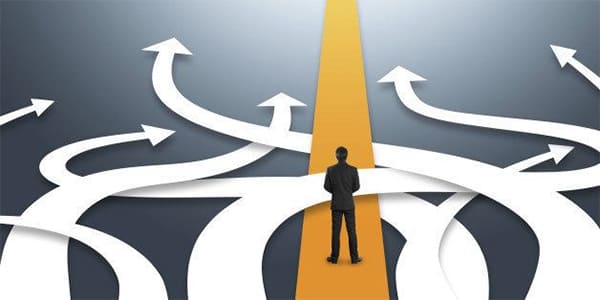
Strategic Planning
Arttierat Intelligence Organization
Dynamic strategic planning to lead in the Al ecosystem of tomorrow.

Dynamic strategic planning to lead in the Al ecosystem of tomorrow.

Strategic support to new group leadership.

Structural redesign for a quickly growing organization.

In this sense, innovation is the culmination of a disruptive cycle of Adaptive Change. To innovate means to deliberately let go of the "way things are" and welcome "the way things could be." The first step toward innovation is to intentionally release established habits of thought, expectations, assumptions, and beliefs in order to embrace "not knowing." Surfing the "edge of chaos" sounds exciting until you arrive and leave control at the door. This is referred to as the Fall in Adaptive Change.
Fortunately, Breakdown is only temporary. As we face the mess, we naturally make sense of it, allowing order and Breakthroughs to emerge – the "ah-ha" moments we crave. The Cauldron of Change, the journey from Breakdown to Breakthrough, is a period of stress (high enough to motivate and mobilise, but also potentially immobilise), uncertainty, and unpredictability. There is no clear path forward, so we must rely on trial-and-error experimentation. This is a time when a quick and straightforward learning cycle is required, one that encourages experimentation and taking calculated risks as you learn your way forward.
Sense-Test-Adapt is a biomimetic cycle that does exactly what it says it does: it propels you forward as order emerges from chaos. The faster you cycle, the quicker you will learn.
Some innovations are based on the advancement of technology, while others are focused on the creation of novel business processes. Both are valuable and significant. A plan for innovation should outline the forms of innovation that are a company's top priority. According to researchers, there are four primary categories of innovation:
This is an innovation that improves on an organization's current capabilities and serves its current consumer base, such as a new version of an existing product.
A disruptive innovation introduces a new business model that challenges or disrupts the business models of competitors. For instance, Amazon's choice to offer free delivery forced other e-commerce companies to offer free or discounted shipping.
The technological breakthrough required for radical innovation must be compatible with the current business model. Companies such as Infarm, which employs remotely managed farming technology to cultivate vegetables within stores, use the traditional supermarket concept to give customers with fresh, local products.
Combining new technology with a change in business strategy, architectural innovation is often the most difficult to implement.
Successful innovation initiatives must align with an organization's broader business strategy. To facilitate effective innovation, all members of an organisation must be aware of its objectives.
This includes having an awareness of the market in which the business intends to operate, as the most successful innovations are those that respond to the needs of customers or potential customers. Your innovation strategy must also incorporate knowledge of your competition.
Additionally, keep in mind that the finest innovations and business strategies follow a predictable S-curve growth cycle. A successful innovation will not continue to expand indefinitely. When novelty wears off and diminishing returns kick in, it's time to bring the next innovation; your strategy should account for this.
Your innovation plan should address the following questions: what distinctive value you will deliver to the market, and what types of innovations will allow you to capture that value and establish a competitive edge.
To answer these questions, a business must comprehend its fundamental competencies.
Can you offer value for customers by saving them money and time? Through increasing their willingness to pay for your product or service? By offering higher societal benefit? By making your product perform better, be more convenient, last longer, or cost less than the alternatives?
The most successful innovations will meet the demands of the clients you wish to serve, and for your business to generate such innovations, it must comprehend those needs, sometimes even before the customers are aware of them.
Your staff are frequently closest to your clients, and they can play a crucial role in identifying unmet needs.
Consider crowdsourcing staff input to reveal their knowledge of client requirements. This can be a useful method for determining where to concentrate your innovation efforts.
The most effective strategy plans are constantly adaptable. Utilize employee crowdsourcing to analyse the performance of your innovation plan. This stage can provide a durable feedback loop for evaluating the viability of your idea and modifying it as needed.
As the needs of customers and the market evolve, you must be willing to alter your innovation approach to better suit reality. Continue soliciting employee feedback via crowdsourcing and adapt your technique to match your current demands.
The environmental strategy is a plan of action for managing environmental protection, stakeholder pressures, and market opportunities. A comprehensive collection of actions, investments, and initiatives will reduce the industrial impact on the natural environment and develop competitive advantages from environmentally friendly products and services. Corporate environmental strategy is likewise an organisational skill in that it integrates and employs a set of resources (such as technology, information, expertise, stakeholder feedback, and external certifications) to achieve a particular objective.
The proactive actions made by managers in areas such as green product design, supply chain management, eco-branding, environmental transparency, and product life cycle stewardship generate competitive and reputational advantages. A company is viewed as environmentally responsible if it executes consistent environmental actions with measurable outcomes. Environmental performance is a company's impact on the natural environment. It includes operational factors such as resource use, pollution, waste production, energy usage, and the contribution to climate change. These consequences should be evaluated across the whole supply chain and throughout the product and service lifecycle. The strategic dimension of environmental performance relates to the environmental policies and goals that must be translated into management structures, production processes, and monitoring systems. Compliance, communication, transformation, eco-efficiency, distinctiveness, and cost leadership are a few of the aims and capabilities that inform the corporate environmental strategy. Any business can select a proportion of each ingredient based on its present business requirements. Moreover, this structure is subject to alter based on the directors' and shareholders' predetermined objectives. Environmental entrepreneurship integrates proactive environmental tactics in order to gain a competitive advantage and remedy market failures. In addition to advancing natural resource conservation, innovative technologies can help minimise externalities through cleaner output. In their pursuit of alternative and environmentally benign solutions, environmental entrepreneurs can help the breakup of monopolies, particularly in polluting industries.
The size of businesses is shifting, and the business environment is altering at a greater rate than ever before (Hamel and Prahalad, 1994; Glass, 1996; Conner, 1998). The business environment consists of both external and internal pressures (Anderson et al., 1994). The external forces, such as rapid advancements in communication medium and technology, cheaper transportation costs, and decreasing trade barriers, can have a significant impact on the market and industry, hence creating uncertainty for businesses. While the internal forces, such as manpower, financial resources, and technological level, are constantly limited. In order to maximise profits, organisations must always strike a balance between their limited resources and their business environment. Strategic planning is one method for reaching this objective.
Nonetheless, steps done to reduce uncertainty may also result in nonlinearity and unpredictability (Black and Farias, 1997). The business environment is changing so rapidly that the strategic planning that is good for the company now may not be suitable for the company tomorrow if the government implements new rules or a new technology that lowers product prices. Therefore, it is essential for businesses to periodically assess the business environment, adapt their strategic planning accordingly, and then align their internal competences with the external environment.

Strategy planning is determined by the external and internal environment, however it may be ineffectual due to the unpredictability of the environment. Therefore, marketers should continuously gather new knowledge about the business environment and develop strategies that can adapt to changing situations (Wall,1995).
Strategy formulation (at this step, marketers should study the corporate environment), strategy implementation, and strategy evaluation constitute the strategy management process.